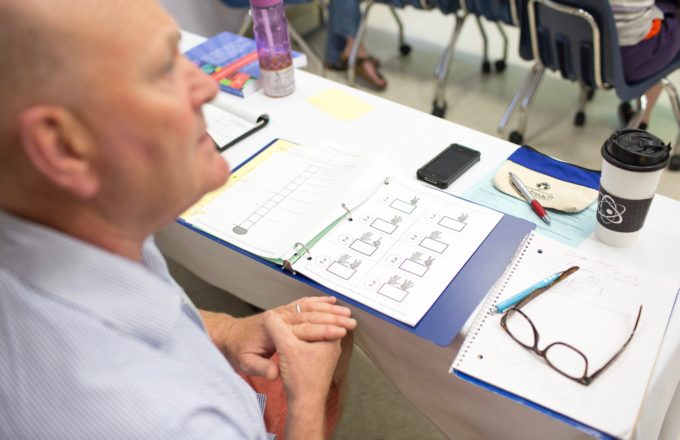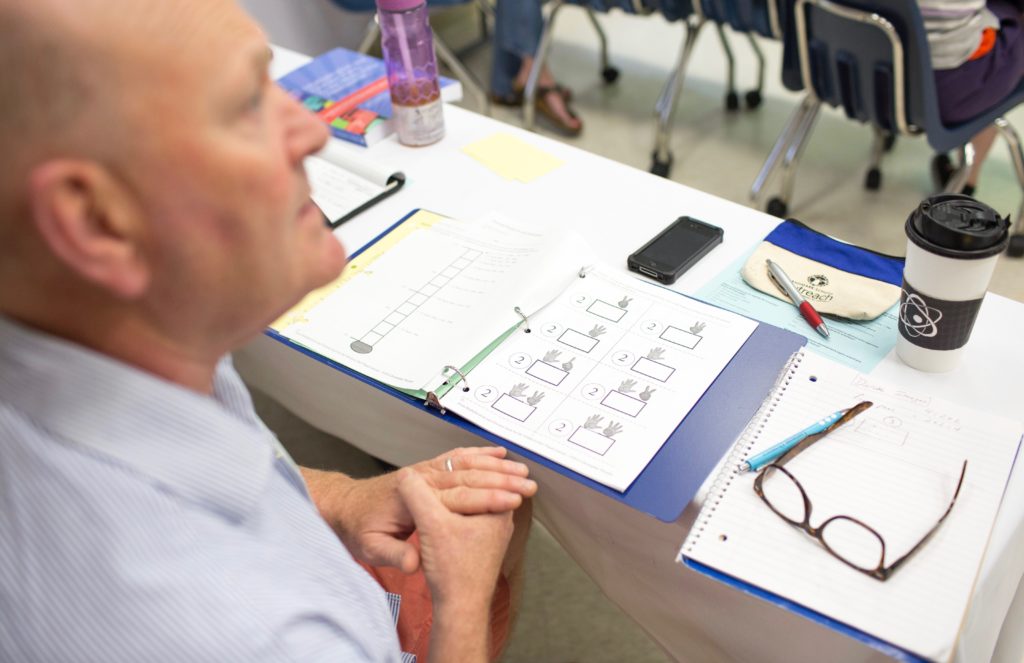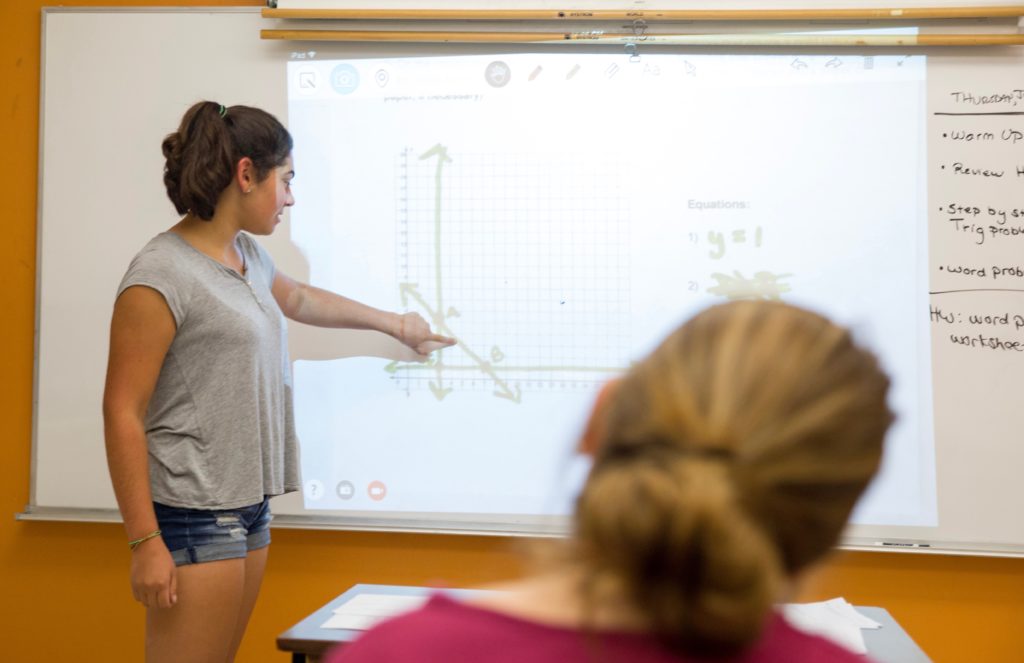Math and Language-Based Learning Disabilities
Children with learning disabilities are not necessarily deficient in mathematics due to an inability to grasp spatial tasks or estimate quantity. Their difficulties often lie in language dysfunction. When teaching mathematics, treat their difficulty as a manifestation of a language-based learning disability.
Students may have poor decoding (reading) skills or expressive or receptive language difficulties. These language-based problems preclude them from effectively developing mathematical abilities. If these students are only provided with lecture or text-based instruction, they are limited by the teaching style in addition to their poor understanding of math concepts.
Complete Sentences
Math may be viewed as a language – a simpler, more consistent, and more regular language than English. This is especially the case with math facts. Numbers represent nouns, while operational signs (+, -, x, / ,=) serve as verbs. Both components are governed by rules of syntax. Math facts, such as 2 x 3 = 6, may be though of as math sentences. Students should be encouraged to speak in complete sentences, to convey an entire thought, and to develop a consistent rehearsal pattern for the math fact.
Rehearsing complete sentences helps to link a correct response, 6, to its stimulus, 2 x 3. This is an essential part of fact memorization. If you provide the stimulus and allow the student simply to state six instead of rehearsing the sentence in its entirety, “two times three equals six,” the student does little to automatize the stimulus response pairing. In addition, the student fails to provide contextual information about the situation that he or she is trying to describe.
Memory is strengthened by richness and logic of content. A student looking out the classroom window might mutter “dog” while observing a magnificent German short-haired pointer loping through a freshly poured cement sidewalk. Clearly, something is being missed in the translation. It is doubtful that a person overhearing the student saying “dog” would be able to gleen an accurate depiction of the image. Similarly, when a student responds with an unconnected single noun answer like “six” it is not stored with its entire fact sentence and has little meaning beyond its discrete value. No ground is gained toward automatizing 2 x 3 = 6. Students form better associations between fact questions and answers when they hear, see (with Arabic numbers as well as concrete models), and rehearse facts in complete sentences.
The Grammar of Math Sentences
Consider 2 x 5 = 10 as a sentence written by a student with a language-based learning disability. Different permutations of element order produce novel sentences that may or may not be accurate. While 5 x 2 = 10 produces an accurate sentence, 2 x 5 = 01, or 2 5 x = 10, or 2 = 5 x 10 demonstrate errors in coding, syntax, and information, respectively. Clearly, the intended meaning of each mathematical sentence is governed by the same components that affect the accuracy of English sentences. Is it any wonder why children with learning disabilities have some associated difficulty when asked to learn math facts? If any grammatical element is corrupt, the sentence is not valid.
Math at the simple sentence fact level is a much easier language than English. Although math has an infinite number of nouns, it has only five verbs (+, -, x, /, =) associated with four basic operations. Some students, however, may need to have the syntax, as well as the coding (place value) and number theory, explicitly taught to them.
Students who benefit from direct presentation of math grammar are often those who have expressive language problems. These students typically provide one- or two-word answers to problems. The latency period for providing a verbal response may be up to 30 seconds. The response may be a circumlocution that skirts the periphery of a correct statement yet ultimately leaves the question unanswered.
Some of your students may have receptive language difficulties. These students are unable to process rapid or complex speech. Students with either expressive or receptive language disabilities perform poorly in fast-paced, verbal environments; however, both types of students are among the most needy in terms of language development. These students need to be exposed to discussion, and take part. It is up to you to modify your presentation so these students can effectively participate and benefit from them.



